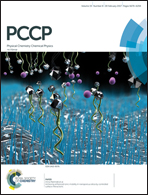SANS investigation of water adsorption in tunable cyclodextrin-based polymeric hydrogels
Abstract
The focus of this work is on addressing how the adsorption properties of cyclodextrin (CD) based polymeric hydrogels (cyclodextrin nanosponges, CDNS) can be regulated by a precise control of a crucial parameter such as the characteristic pore size of the polymer network. With this aim, Small Angle Neutron Scattering (SANS) experiments are performed on different CDNS polymer formulations, differing by (i) the chemical structure of the cross-linking agent used for the polymerization of CD, which affects the flexibility of the strands between two crosslinking junctions, (ii) the relative molar ratio of cross-linker to monomer, affecting the cross-linking density, and (iii) the dimension of the CD macrocycle, regulating the steric hindrance and number of available reactive sites on the monomer. The analysis of the experimental data in terms of a two-correlation-length model allows one to extract a correlation length ζ that is interpreted as an experimental assessment of the average mesh-size of the cross-linked polymer, confirming the effective nano-size of the cavities formed in the network of CDNS. The hydration-dependence of ζ is modelled by an empirical functional form, that provides as key parameters the swelling rate of the polymeric network and the upper limit for the mesh size of the material. These parameters are useful for the characterization of the dynamic response of the hydrogel to swelling and the maximum mesh size compatible with the chemical structure of the polymer.



 Please wait while we load your content...
Please wait while we load your content...